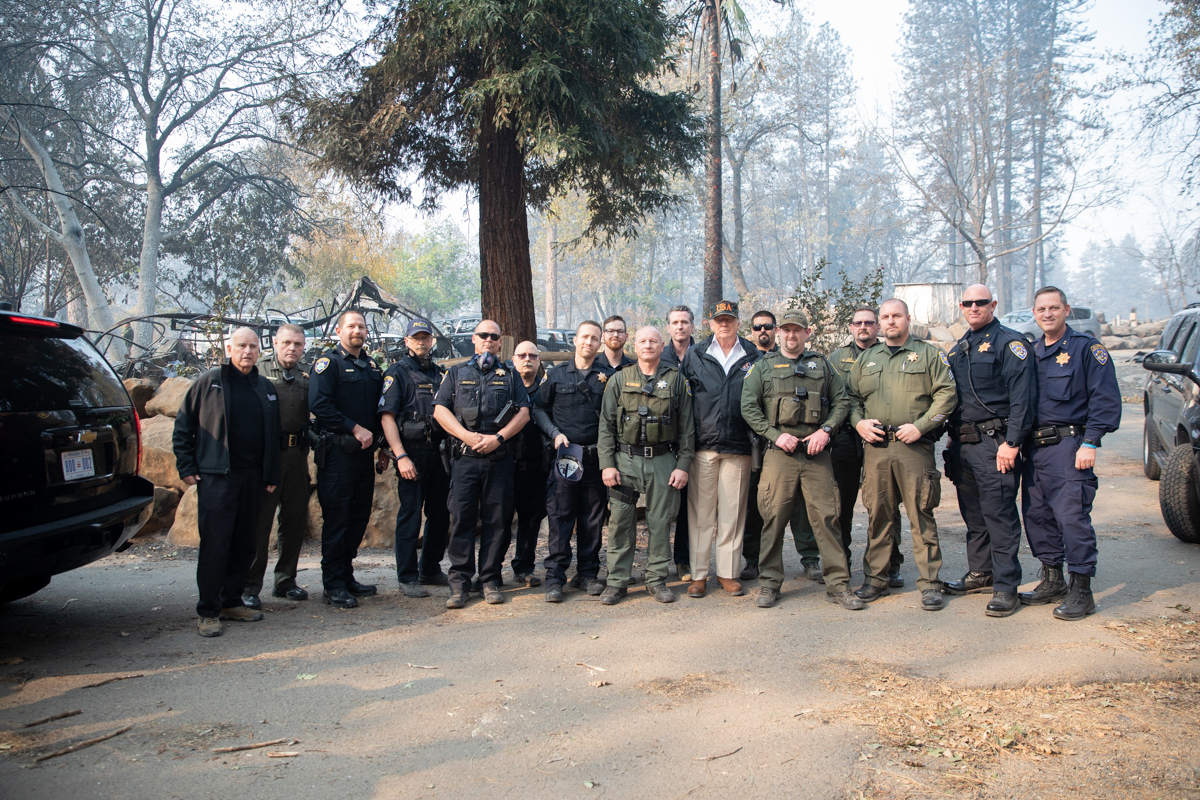This is the third article in a series The Daily is publishing about wildfires and their consequences on and off campus.
In a trio of tweets aimed at California Gov. Gavin Newsom in early November, President Trump threatened again to stop paying federal emergency aid to the fire-ravaged state.
Trump criticized Newsom over forest management and how he “comes to the Federal Government for $$$ help” every time a fire destroys a Californian community.
“No more,” he tweeted.
The messages did not appear to presage any immediate concrete policy changes, but fueled debate over climate change, forest management and the state’s relationship with the federal government.
The tweets echoed the president’s previous criticisms of Gov. Newsom and his predecessor Gov. Jerry Brown. About one year ago, after the devastating Camp Fire displaced thousands in small towns north of Chico, the president met with both men to survey the destruction and raised the issue of wildfire prevention in a speech.
“Everybody now knows that this is what we have to be doing,” he said, “It should’ve been done many years ago.”
Newsom quickly fired back at the tweets by jabbing at the president’s dismissal of climate change.
“You don’t believe in climate change,” Newsom tweeted. “You are excused from this conversation.”
Chris Field, director of the Stanford Woods Institute for the Environment, told The Daily that California is a “perfect storm” for wildfires.
The big factors driving fires in recent years include “drier fuels from climate change, a history of fire suppression allowing fuels to accumulate and a growing number of people — 11 million to be exact … living on land seriously threatened by wildfires.”
While the fires appear to have calmed down, the tweets echoed a threat by Trump earlier this year to cut Federal Emergency Management Agency (FEMA) aid to California.
“Unless they get their act together, which is unlikely, I have ordered FEMA to send no more money,” Trump tweeted in January.
Despite Trump’s tweets, in July FEMA approved around $77 million to reimburse the state of California for emergency protective measures performed by the California Department of Forestry and Fire. The total amount of federal assistance to the communities devastated by the Camp, Hill and Woolsey fires exceeds more than $163 million.
Trump is adamant that forest management techniques are crucial in preventing these devastating fires.
Rebecca Miller, a Ph.D. candidate in Stanford’s Emmett Interdisciplinary Program in Environment and Resources, sees necessary improvements to forest management.
“We need to be using every tool in the toolbox to manage the forests by addressing this overgrowth of fuel,” Miller told The Daily. “The three primary fuel treatments — mechanical, prescribed burns and managed fires — all need to be utilized.”
Stanford research into fire prevention is ongoing, producing tools such as a newly patented fire retardant hydrogel.
Beyond forest management, the question of climate change’s role in creating conditions of possibility for wildfires has been another major source of tension. Newsom has publicly declared that climate change is a cause of the frequent forest fires.
Although projections of climate change and fire risk vary widely, the dominant scientific position is that the catastrophic fires that continue to devastate California have been worsened by greenhouse gas emissions.
Climate change and wildfires tie into broader conflicts between the state and federal government over environmental regulations, notably California’s mandates regarding automobile emissions.
Field emphasized that there is a lot to be done with regard to climate change policy.
“The last thing we want in 20 years is to be saying that we should have tackled climate change now,” Field said. “No question.”
Contact Madison Connell at mconnell ‘at’ stanford.edu.
